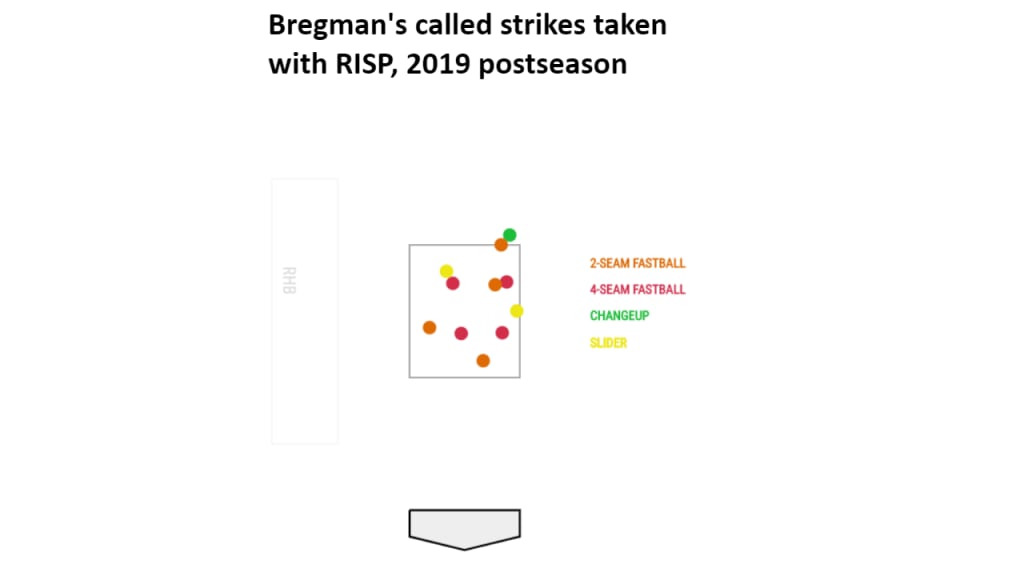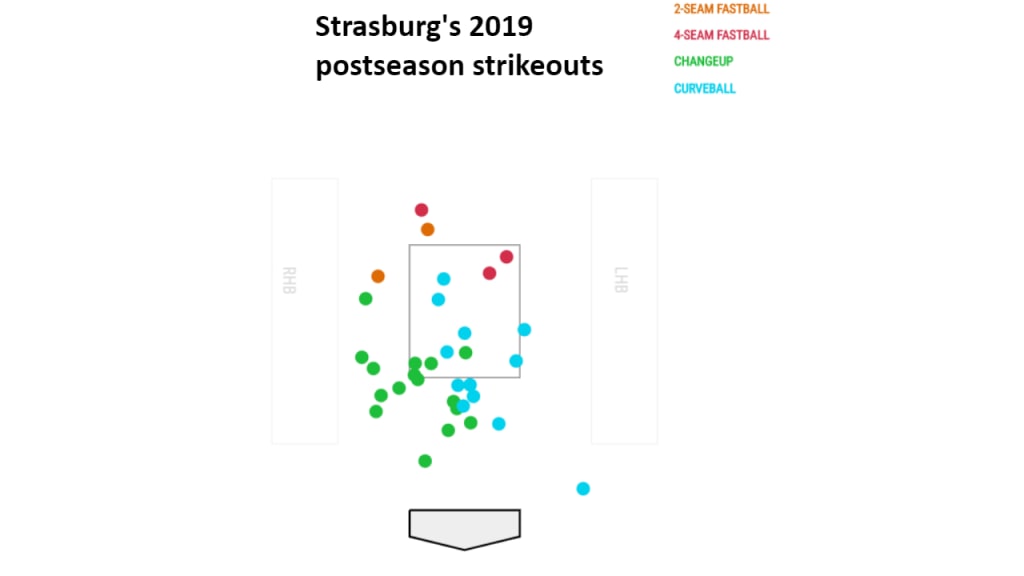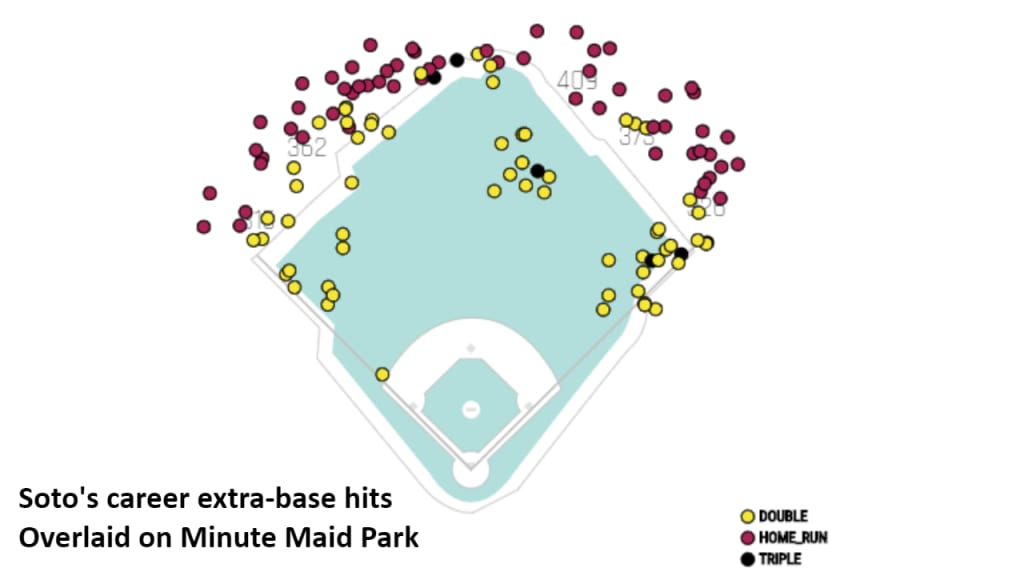If Game 1 of the World Series gave us a preview of what's to come, we're in for another great Fall Classic.
Wednesday night's Game 2 at Minute Maid Park should be just as exciting as the opener -- a one-run win by the Nationals over the top-seeded Astros in Washington's first World Series game. In Game 2, two more aces take the mound in Justin Verlander and Stephen Strasburg, and the star bats in the lineups aren't going anywhere.
What storylines should fans be keeping an eye on Wednesday? Here are four key matchups to watch in Game 2.
1) Alex Bregman vs. the strike zone
"I've been terrible this postseason," Bregman said after Game 1, shouldering the blame for the Astros' struggles with runners in scoring position. In the playoffs, he's 1-for-11 with runners in scoring position, and that hit came back in the American League Division Series. So what's happening? Well, Bregman himself identified a root cause: taking fastballs for strikes.
One of the biggest reasons Bregman is an AL MVP MVP Award candidate is his command of the strike zone. That doesn't just mean laying off bad pitches (Bregman chased an MLB-low 15.8 percent of the time during the regular season), it also means picking the right ones to attack.
Bregman hasn't been doing that in the playoffs. With runners in scoring position, he is only swinging at half the pitches he sees in the strike zone. He swung at 61.8 percent of pitches in the zone when he had runners in scoring position during the regular season. For fastballs specifically? This postseason, with runners in scoring position, Bregman has only swung at 42.9 percent of fastballs in the strike zone. In the regular season, he swung at 61.1 percent of those.

It's not even just with runners in scoring position. Bregman's overall struggles since the start of the AL Championship Series (1.097 OPS in the ALDS, .569 OPS since) coincide with taking more hittable fastballs. Since the start of the ALCS, he has only swung at 56.5 percent of fastballs in the "heart" of the strike zone -- clear strikes, more than a baseball's width inside the zone's borders. Before that, Bregman had swung at 63.9 percent of those interior-zone fastballs this season.
If Bregman's going to get back to hitting like himself in this World Series, he needs to attack like himself.
2) Stephen Strasburg vs. Yordan Alvarez
Strasburg, the Nationals' Game 2 starter, has put on a clinic this postseason on how to use your secondary stuff.
Strasburg's 2019 pitch usage
Regular season: 48.3 percent fastballs (four-seam and two-seam), 51.7 percent secondary (curveball and changeup)
Postseason: 41.6 percent fastballs, 58.4 percent secondary
Strasburg shifts even more to secondary pitches with two strikes.
Strasburg with two strikes
Regular season: 37.6 percent fastballs, 62.4 percent secondary (32.6 percent curveball, 29.8 percent changeup)
Postseason: 30.4 percent fastballs, 69.6 percent secondary (41.6 percent changeup, 28 percent curveball)
It's working -- Strasburg has a 1.64 ERA this postseason with 13.5 strikeouts per nine innings.

All this should make for a very interesting matchup with Astros rookie slugger Alvarez. He crushed secondary stuff during the regular season -- he had a .641 slugging percentage, and 14 of his 27 home runs came against breaking and offspeed pitches. But it's been a roller coaster in the playoffs.
Alvarez vs. breaking/offspeed pitches, 2019 postseason
ALDS: 5-for-10, 3 doubles
ALCS: 0-for-10, 9 strikeouts
WS: 1-for-1, single (off Max Scherzer)
Which Yordan will we get in Game 2 against Strasburg and his steady diet of curves and changeups?
3) Juan Soto vs. the Crawford Boxes
Any good right-handed power hitter must start salivating at the sight of the Crawford Boxes, Minute Maid Park's short-left-field seats. Home-team hitters like Bregman, who's pulled 33 homers this year, more than any other hitter, or Yuli Gurriel, who lined a huge homer to the Crawford Boxes in the clinching Game 6 of the ALCS, take advantage of their stadium all the time.
But who did it best in World Series Game 1? The 20-year-old lefty on the other side, Soto. He crushed a game-tying opposite-field homer and a go-ahead opposite-field double off the wall against Gerrit Cole on Tuesday to lead the Nats past the Astros.
Watch Soto again in Game 2. Because this is exactly what makes him so dangerous: he crushes the ball to the opposite field.
Highest SLG to the opposite field, since 2018
Minimum 200 opposite-field batted balls since 2018
- Javier Báez (CHC): .973
- Christian Yelich (MIL): .871
3) Juan Soto (WSH): .833
4) Shin-Soo Choo (TEX): .830
5) J.D. Martinez (BOS): .817
After his homer and double off Cole in Game 1, Soto sits with the third-highest slugging percentage to the opposite field among MLB regulars since his 2018 debut. More than a third of his career extra-base hits (43 of 124) have gone to left, and he has a lot of power to left-center, too.
Left field in Houston isn't just made for righties who lift the ball. It's tailor-made for Soto.

4) Justin Verlander vs. Howie Kendrick and Anthony Rendon
Verlander's trademark is his high-spin, rising, four-seam fastball. He throws one of MLB's highest-spin four-seamers year after year.
Highest average four-seam spin rate by a starting pitcher in 2019
Minimum 250 four-seamers thrown
- Mike Minor (TEX): 2,650 rpm
2) Justin Verlander (HOU): 2,576 rpm
3) Jeff Samardzija (SF): 2,571 rpm
4) Gerrit Cole (HOU): 2,536 rpm
5) Yu Darvish (CHC): 2,529 rpm
MLB average four-seam spin rate for starters: 2,276 rpm
Verlander's four-seamer is 300 rpm above the average starter's. Because of that high-spin fastball, keep an eye on his showdowns with two of Washington's top hitters in Game 2: Kendrick and Rendon.
Kendrick crushed high-spin fastballs this season. Against four-seamers with a spin rate of 2,400 rpm or higher, Kendrick batted .483 (14-for-29) and slugged 1.207. His batting average was the second highest in MLB; his slugging percentage was the highest.
The MVP candidate Rendon? He actually struggled with high-spin fastballs. Rendon hit just .167 against 2,400-plus rpm four-seamers this season (6-for-36), with a .333 slugging percentage. Both of those ranked toward the bottom of the league. In Rendon's first World Series at-bat, Cole struck him out with a high-spin four-seamer at the top of the strike zone (97.6 mph and 2,655 rpm).
Will Verlander try to attack Rendon with that same type of fastball in Game 2, but go after Kendrick with, say, his slider? We'll have to watch and see.
